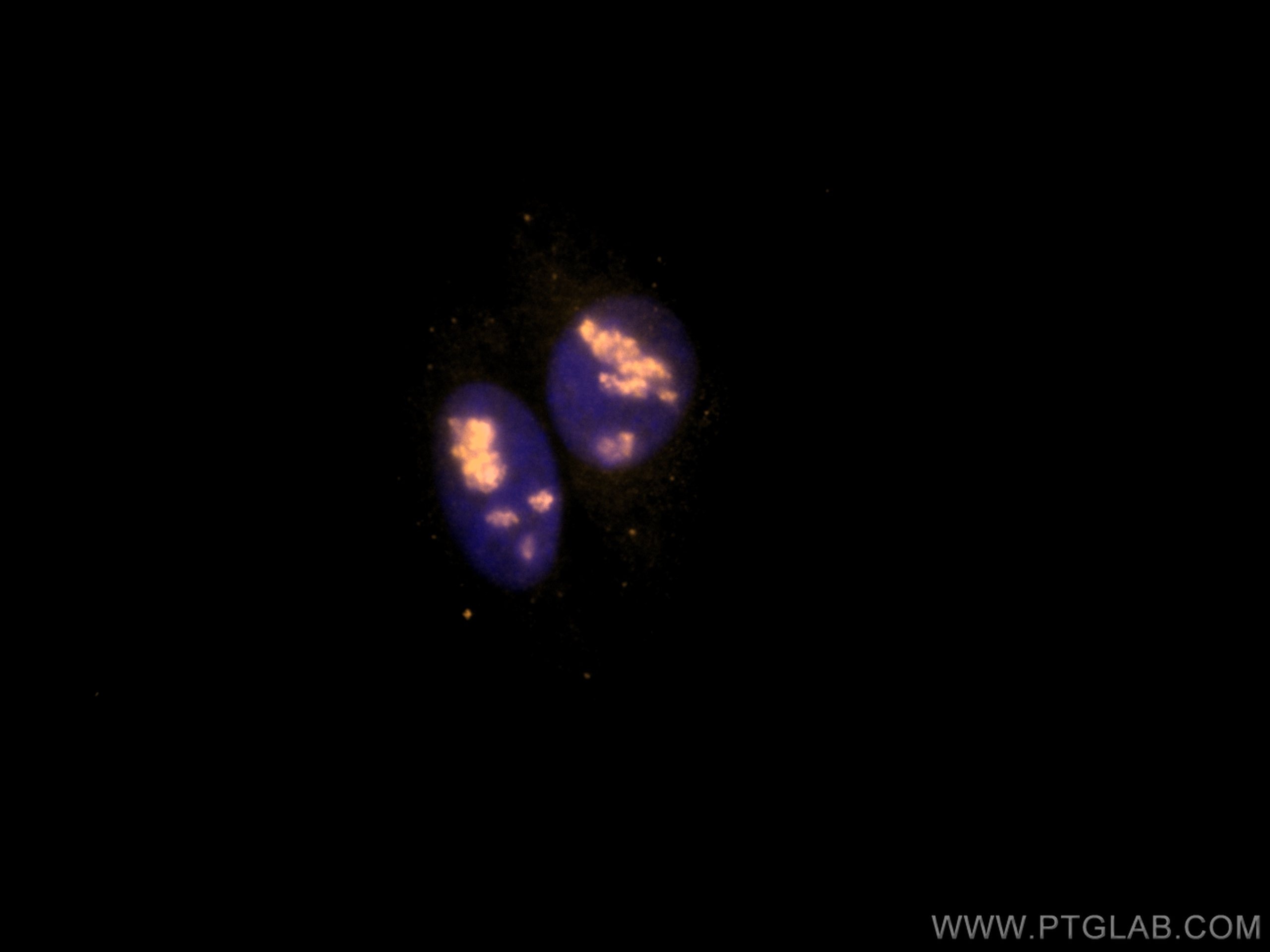CoraLite®555-conjugated DDX21 Monoclonal antibody
DDX21 Monoclonal Antibody for IF
Host / Isotype
Mouse / IgG1
Reactivity
Human
Applications
IF
Conjugate
CoraLite®555 Fluorescent Dye
CloneNo.
1B9C8
Cat no : CL555-66925
Synonyms
Validation Data Gallery
Tested Applications
| Positive IF detected in | HepG2 cells |
Recommended dilution
| Application | Dilution |
|---|---|
| Immunofluorescence (IF) | IF : 1:250-1:1000 |
| It is recommended that this reagent should be titrated in each testing system to obtain optimal results. | |
| Sample-dependent, Check data in validation data gallery. | |
Product Information
CL555-66925 targets DDX21 in IF applications and shows reactivity with Human samples.
| Tested Reactivity | Human |
| Host / Isotype | Mouse / IgG1 |
| Class | Monoclonal |
| Type | Antibody |
| Immunogen | DDX21 fusion protein Ag17850 |
| Full Name | DEAD (Asp-Glu-Ala-Asp) box polypeptide 21 |
| Calculated Molecular Weight | 783 aa, 87 kDa |
| Observed Molecular Weight | 90-95 kDa |
| GenBank Accession Number | BC008071 |
| Gene Symbol | DDX21 |
| Gene ID (NCBI) | 9188 |
| Conjugate | CoraLite®555 Fluorescent Dye |
| Excitation/Emission Maxima Wavelengths | 557 nm / 570nm |
| Form | Liquid |
| Purification Method | Protein G purification |
| Storage Buffer | PBS with 50% Glycerol, 0.05% Proclin300, 0.5% BSA, pH 7.3. |
| Storage Conditions | Store at -20°C. Avoid exposure to light. Stable for one year after shipment. Aliquoting is unnecessary for -20oC storage. 20ul sizes contain 0.1% BSA. |
Background Information
DDX21 protein belongs to DEAD box protein family which is characterized by the conserved motif Asp-Glu-Ala-Asp (DEAD). As a putative RNA helicase, DDX21 unwinds double-stranded RNA, folds single-stranded RNA and is involved in process including ribosomal RNA biogeneis, RNA editing and general transcription. Interaction of DDX21 and c-Jun was reported in ribosomal RNA processing.
Protocols
| Product Specific Protocols | |
|---|---|
| IF protocol for CL555 DDX21 antibody CL555-66925 | Download protocol |
| Standard Protocols | |
|---|---|
| Click here to view our Standard Protocols |


